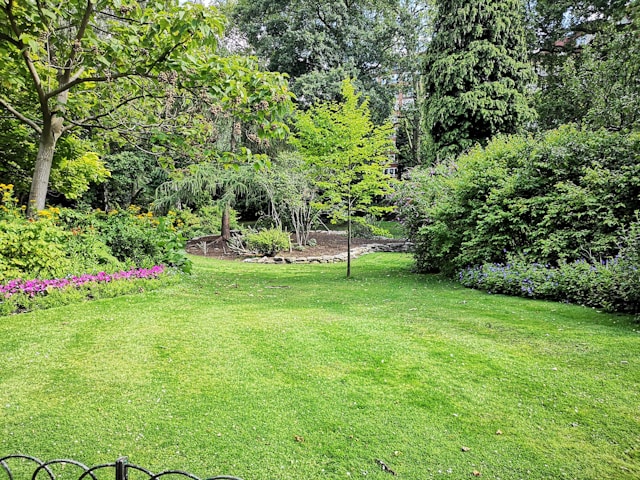Imagine stepping out your door and onto a shady walking path. Kids ride bikes without heavy traffic. Families meet in gardens. Wetlands nearby hold wildlife and help control floods.
This is life in a master-planned community—a neighborhood designed to mix homes, parks, and nature in one plan. These communities are not just suburbs with houses. They show how cities can grow while protecting nature and building healthier lives.
What Makes Them Different
Most neighborhoods grow without much planning. A few houses go up. Later, a park may follow. Shops or schools arrive years later.
Master-planned communities work the opposite way. They start with a clear design. Planners decide where homes, shops, and schools go. They map out trails, parks, and open spaces before building begins.
This keeps nature and neighborhoods in balance. Habitats stay connected. Wetlands or forests are saved. Residents enjoy more than a house—they live in a space shaped to protect both people and the land.
Outdoor Life Built In
In these communities, outdoor fun is part of the plan. Trails link homes to parks. Playgrounds and sports fields sit nearby. Lakes or rivers offer places to walk, fish, or paddle.
These features make it easy to be active. You don’t have to plan a trip to exercise. A walk or bike ride is right outside. Schools, shops, and parks close by mean less driving. Less driving means fewer emissions and stronger community ties.
Green Spaces That Do More
Parks and trails are not just for leisure. They also support the environment.
- Trees keep neighborhoods cooler in summer.
- Plants filter air and improve its quality.
- Wetlands slow stormwater and help prevent floods.
- Green corridors give animals safe ways to move.
Living in these communities, people spend more time in nature. That lowers stress and improves health. It also teaches families to value the land around them.
Building Social Bonds
Shared outdoor areas do more than look nice. They bring people together.
A shaded picnic area, a lakefront, or a garden invites neighbors to meet. Children play together. Adults chat on walks. Over time, this builds trust and friendship.
Research shows that daily access to green space reduces stress, boosts mental health, and increases activity levels. Walkable paths and gathering spots make people feel they belong. Stronger bonds mean stronger, more resilient communities.
The Hard Part of Planning
Balancing homes and green space is not simple. Developers face trade-offs.
How much land should stay natural? Who pays to care for trails and wetlands long-term? How do you keep parks open to all, not just those who can afford bigger homes?
Without careful planning, green features can become unequal. Some residents enjoy them, while others are left out. To avoid this, communities need fair rules, funding, and inclusive design. Everyone should benefit from the spaces that define these neighborhoods.
A Real-World Example
Some communities show how this works in practice. Projects like https://www.windriverliving.com/ includes walking trails, waterfront access, and parks set within natural landscapes.
It’s one of many projects proving that when design is intentional, outdoor living and sustainability can exist side by side. The point isn’t luxury—it’s that green planning only works when it’s central, not added later.
Benefits Beyond the Neighborhood
Master-planned communities create impacts that go beyond their borders.
- Health: Trails and parks help fight obesity and stress.
- Economy: Homes near green space hold value. Local shops and tourism also benefit.
- Environment: Preserved wetlands and trees reduce floods, clean the air, and support wildlife.
This “triple win”—health, economy, and environment—shows why these designs are models for the future of cities.
What’s Next for Green Communities
Future communities may go even further. Expect:
- Solar panels on homes and centers.
- Charging stations for electric cars.
- Greywater and rainwater systems to save water.
- Native plants that resist heat and need less care.
- Community farms that support local food.
But progress must also focus on fairness. Parks, clean water, and trails must be open to all. Sustainability is incomplete if access depends on income or location.
The long-term success of these communities also depends on residents. Trails and gardens only work if people use and care for them. Living green requires shared effort, not just design.
Moving Forward
Master-planned communities prove that growth can happen without harming nature. With careful planning, they turn outdoor life and conservation into part of daily living.
They are not a cure for all urban problems. But they show that we can build neighborhoods that are healthy, social, and sustainable at the same time.
In a world facing rising populations and climate change, these communities give us a clear lesson: we can live well and live green together.



